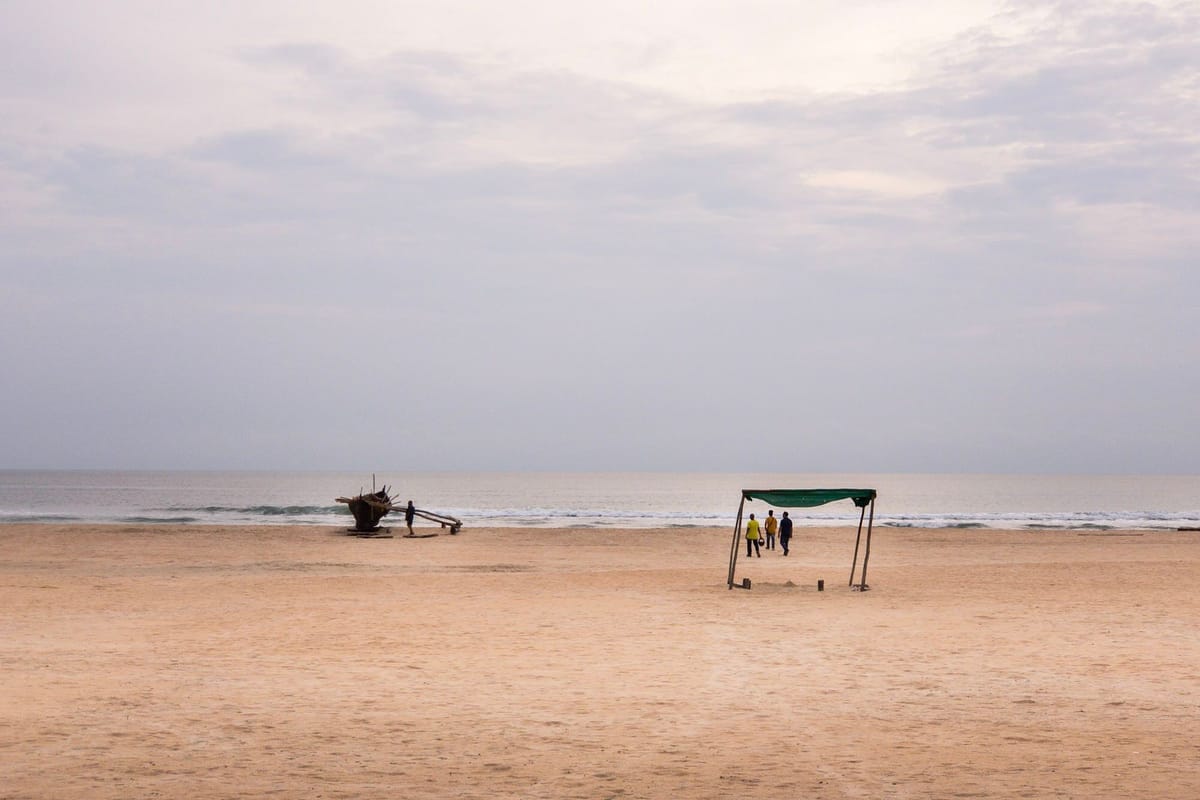Salim Ali, Maa, Salim Ali!
Many birdie questions came to mind at The Leela Goa. How far over the sea can the crow fly? What was that golden, hawklike bird that landed by the greens?

A little girl came down the narrow wooden bridge across the slim lagoon that snakes between the villas at The Leela Goa.
“Salim Ali, Maa. Salim Ali! You don’t know Salim Ali?”
Her maa was silent, but I heard her embarrassment as I passed them. As regards myself, I’ve heard of that ornithologist, but I haven’t read him, and I don’t know more than a half-dozen bird types.
Anyway, for this entire short stay at The Leela Goa, I’ve been sighting mainly crows. Last evening, I’d been sitting in a corner at the Susegado, the beachside restaurant the hotel. Beneath me the stone floor ended and the flour-thin sand of the beach began its long smooth run to the sea. I was reading Kathleen Jamie’s Findings, and sweating in 32º heat like it was 40º. There wasn’t any breeze, just the somnolent beauty of the Mobor Beach by which sprawls The Leela. A fisherman’s boat was moored on the higher sands, small, charcoal black, weatherbeaten. The fisherman appeared now and then, pulled something from his vessel, righted something, and went, and returned. A few guests played on the fringes of the water, all of them Indian, all fully clothed — the season for foreigners starts October.
Above the sparse action sat the lifeguard on a yellow perch, by a red flag that he’d raised to honor the choppy sea. The state has banned fishing for two months in anticipation of the monsoons; the lifeguard in his turn had forbidden swimming in the moment.
Round me and running as far as I could see, were castrated coconut palms — the nuts hacked to keep the guests safe — should one fall on a head. Being at the end of the shore, close to densely wooded headlands that jut into the sea and stop the run of sand, the beach before the Leela is private, and, during the lean season in June, quiet.
After a time I became aware of the crows, of their insistent cawing, and their large number. I put down my book and gazed at the sea, favoring the crows back of me with only my ear. Just then one of their number shot into view, flying high and seaward, flapping its wings like the crow and sailing now and then in the manner of the eagle. How far over the sea can the crow travel and return safely? It flew and flew and after a long while it fell — a free fall, actually, the wind-currents revealing themselves the times the bird faltered in its fall. It touched down, and soon it rose, gained height and, just as I thought it was coming back, flew toward the white horizon. In time the lone flier became a speck, a flickering dot, and vanished.
The following morning during my walk I caught sight of a bird sitting tall at the lotus pond in the golf course on the property. Its lush, tan body reminded me of the golden retriever. Its neck and breast were white. It dipped its beak into the pond — for water? Was it this — and not the crow — that I’d seen the evening before, taking off on a lofty flight over the Arabian? A sea hawk? The osprey? Is the sea hawk nocturnal? I suppose not. What was its mission then? At six in the evening? And why had this golden thing appeared so black?
At breakfast at the imaginatively named The Restaurant in the resort, I leaned back in my chair and looked out. The teeny couple hopping about on the branches of a distant plumeria were woodpeckers, I figured, after first guessing them as the kingfisher. Their colors glittered in the morning sun, and the jutting peaking on the head leaned backward and high. But I’m not so sure now as I put this post together: I’ve spent the last few minutes on the Internet, trying to extract the image of the bird, and its name, querying for a small bird with brilliant colors, predominantly blue, and a prominent peaking on top.
I could ask that girl who was outraged at her mother’s ignorance of Salim Ali. She should be here, somewhere among the abundance in this luxurious watering hole where all guests must arrive for the lazy resort-breakfast. She’s not in this South Indian section where I am sitting, relishing idli and dosé with red, white, green, and yellow chutney. She’s not in the North Indian bay from where I fetched cut-fruit and coffee. I’ll try in the large Asian n’ Continental hall at the far end.
I’ll also check with the kid if the snow-white birds that that Sujaya spotted among the pure-pink villas here are the crane. Cranes as I know are long in the neck and leg and beak. These ones are medium-large overall, but short and thick in their parts. Are they the stork? I’ll ask. What’s the difference between a crane and a stork?
The child will not be kind to me.